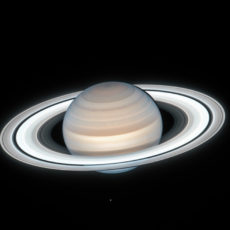
NASA’s Spitzer Space Telescope captured a stunning image in the constellation Sagittarius that resembles a famous prehistoric sea monster empowered by nuclear radiation…Godzilla. It may take you a few glances, but upon closer inspection, you’ll see that the stars located in the upper right form Godzilla’s eyes and snout, located some 7,800 light-years from Earth. The bright region in the lower left that looks like Godzilla’s right hand is called W33.

Should you attempt to view this region using a high-powered telescope, you’ll notice that in visible light, everything appears to be obscured by dust clouds. However, switch to infrared light and all of the hidden regions are revealed, like this one. The blue, cyan, green, and red are used to represent the various wavelengths of infrared light.
- POWERFUL REFLECTOR TELESCOPE: The Celestron AstroMaster 114EQ Newtonian telescope is a powerful and user-friendly reflector telescope. It features...
- NEWTONIAN REFLECTOR OPTICAL DESIGN: With a 114mm aperture, the AstroMaster 114EQ can gather enough light to see our Solar System and beyond. View...
- EASY TO SET UP AND USE: This is a great telescope for kids and adults to use together. It features a manual German Equatorial mount for smooth and...
When massive stars die and explode into supernovae, they reshape the regions around them, carving them into different shapes; they also push material together and initiate the birth of new stars that continue the cycle,” said NASA.



